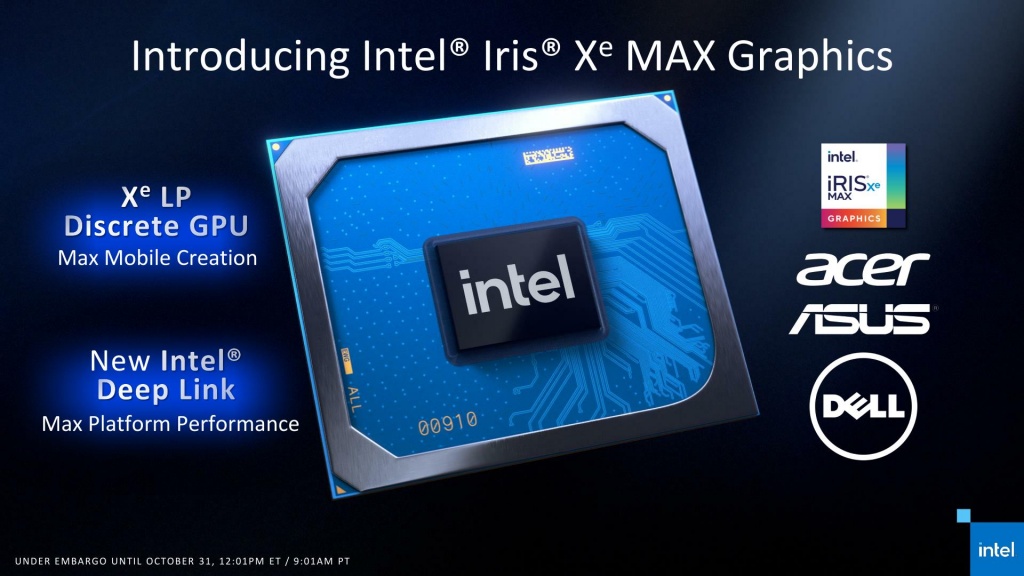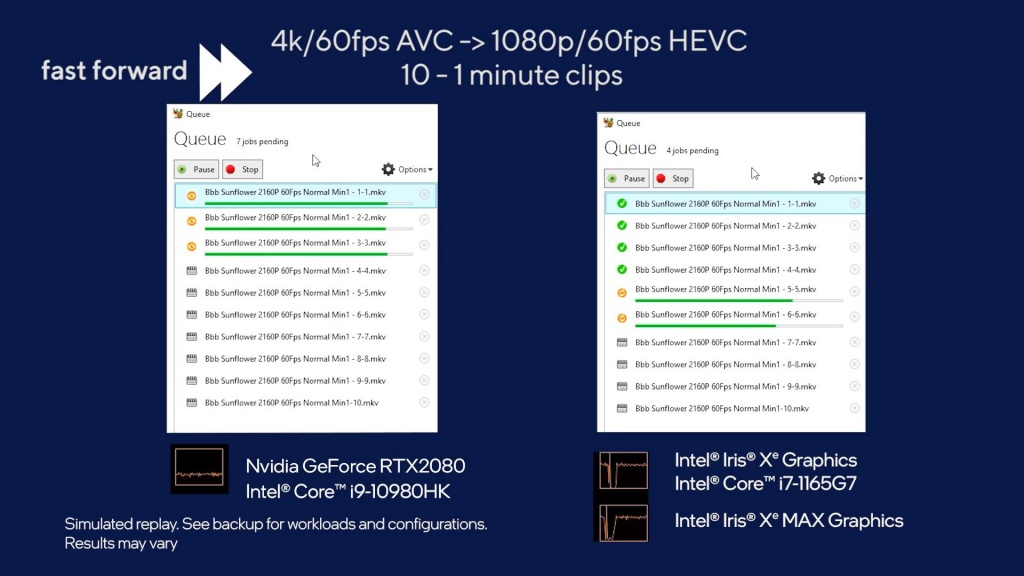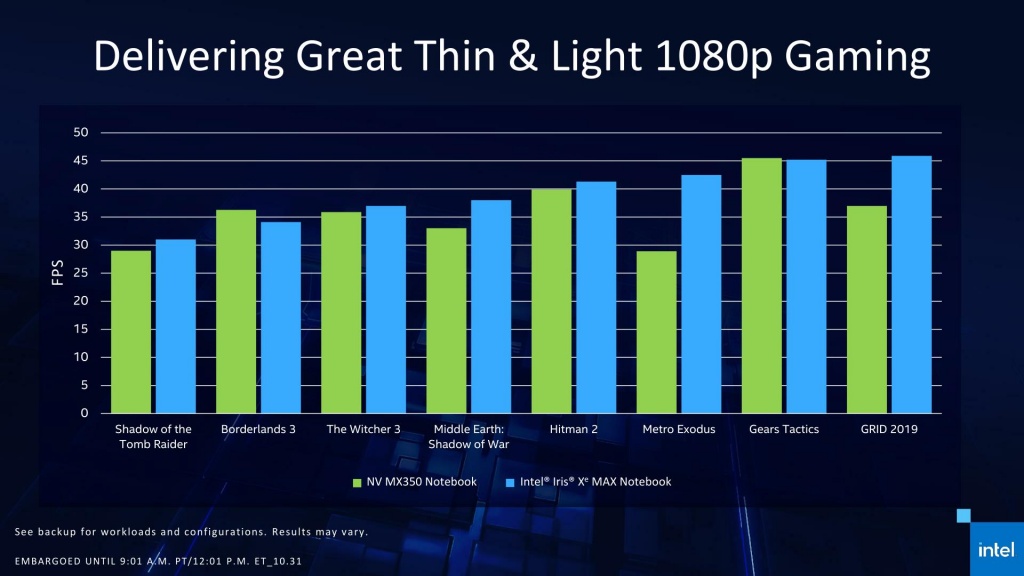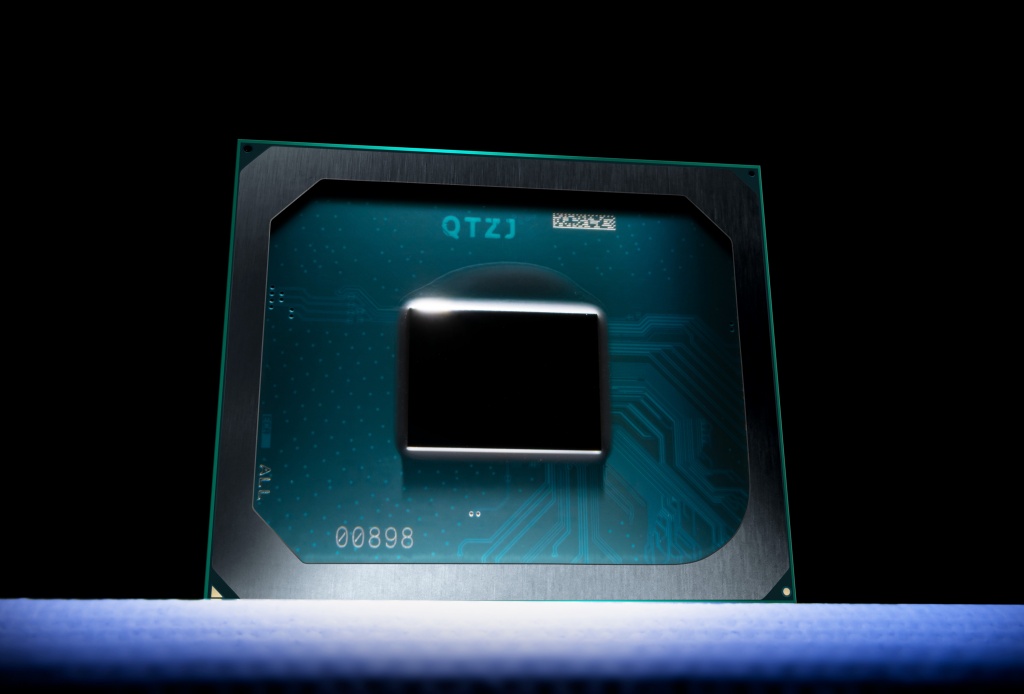Now granted, the Iris Xe MAX is still a mobile GPU meant to be used in laptops and thin-and-light notebooks of the sort, but that does not take anything away from the importance of this first step. Intel is a huge company, with a gigantic R&D budget, skilled engineers, and decades of experience behind them. If they are ready to enter the GPU market with a product like Iris Xe MAX, then it should be at least cropping up on the horizon of AMD and Nvidia. The Iris Xe MAX is Intel’s first step into the GPU market, with the company also working on discrete desktop graphics cards that are meant to be launching in the future. The Iris Xe MAX is a fully discrete GPU solution that is shipping in OEM laptops from companies like Acer, ASUS, Dell, and more.
Intel’s Entry into the GPU market
With the Intel Iris Xe MAX, Intel is offering a moderately powerful discrete mobile GPU to be used in notebooks and thin-and-light laptops. The Iris Xe MAX is based upon Intel’s DG1 GPU which is supposed to be in the heart of Intel’s first desktop graphics card as well. The DG1 GPU was shown off at CES 2020 where Intel presented the chip in laptops and in a pre-production development graphics card as well. While that may seem like exciting news to people looking for desktop-grade GPU performance in a laptop, they should not get too excited about the Xe MAX as it is still a very cut-down version of the die that will eventually be featured in a full graphics card.
Architecture and Basics
The Intel Xe MAX Graphics solution is based on the already-existing Xe-LP architecture, which is the basis of the iGPU inside the Intel Tiger Lake chips. The laptop CPUs that Intel is currently selling based on the Tiger Lake architecture already include an iGPU that is based on this architecture. So what is the purpose of adding another GPU based on the same design? The answer to that is fairly straightforward. While the Intel Tiger Lake iGPU is nothing more than a conduit for your laptop’s display, the Iris Xe Max Graphics option offers an upgrade to the existing iGPU which may be attractive to people looking to do something productive that leverages the faster graphics performance. Still, the Xe MAX is in no way an enthusiast-class GPU or even a competitor to Nvidia’s or AMD’s mobile GPUs, the Xe MAX exists as an upgrade option for those looking to perform some graphics-intensive productivity tasks on their laptop. Now, you might be wondering, isn’t the onboard GPU of the Tiger Lake chips enough for any kind of basic functionality that one might expect from an iGPU? Well, the answer is yes, but that does not mean that the Xe MAX is an irrelevant product. It still holds its place well in a tight market sandwiched between the iGPU of the CPUs themselves, and some of the more mature and faster mobile dGPU options like the Nvidia MX350. It is important to note that Intel has not developed any kind of multi-GPU support like SLI and CrossFire for their GPUs yet, so it is not possible to squeeze out extra performance from a Tiger Lake based laptop by combining the power of the Xe MAX with the iGPU of the CPU itself. While that would be a fairly straightforward and easy way to increase the graphical horsepower of these laptops, it is unfortunately not yet possible. Hence, for people looking for a bit more power than the iGPU can muster, the Iris Xe MAX upgrade option should definitely be appealing.
Deep Dive
For the deep dive portion of the article, it is important to first take a look at the core specs of the Intel Iris Xe MAX dGPU. So the Xe MAX is derived from Intel’s Tiger Lake iGPU which can be clearly seen once these two are compared side-by-side. The architecture behind the two, namely Xe-LP, was designed to have 96 EUs, so Intel put 96 EUs in both the Tiger Lake iGPU and consequently the Xe MAX dGPU. The similarities do not end there as both the Tiger Lake iGPU and the Xe MAX dGPU contain the same two Xe-LP media encode blocks, the same 128-bit memory controller, and even the same display controller. The DG1/Xe MAX can also do H.264/H.265/AV1 decoding because Intel did not even take out the video decode blocks. This can come in handy when doing on-chip video transcoding. Intel has understandably not provided die sizes or transistor counts for the DG1 GPU but a rough estimate from reputable sources would put the die at around 72mm2. This is a rough estimate but it does put the DG1 on the lower end of GPU sizes, which is achievable due to Intel’s 10nm SuperFin process that is used to manufacture the GPU. The biggest advantage that the Xe Max has over the iGPU of the Tiger Lake CPUs is the clockspeed. The Intel Iris Xe MAX can boost up to 1.65GHz, while even the fastest Tiger Lake-U iGPU can turbo up to 1.35GHz. These numbers are actually not indicative of real-world performance differences in terms of laptops because the heat and power delivery characteristics can play a huge role in the actual clockspeeds and the duration of the boost period. The Xe MAX also shares the same controller as the Tiger Lake CPUs which means that this is the first stand-alone dGPU with LPDDR4X support in terms of RAM. That is interesting and maybe even a concerning choice because usually, the GPU solutions use the faster GDDR type of memory which offers significant bandwidth improvements. Still, it would be interesting to see the Xe MAX in competition with other offerings like the MX350 from Nvidia.
Performance
To be perfectly clear, no one was actually expecting Intel’s first discrete mobile GPU to be a gaming powerhouse, and it’s not. In fact, Intel is not positioning the Iris XE MAX as a gaming solution, rather it is quite carefully positioned as an upgrade option targeted at mobile content creators and light productivity applications. The Iris Xe MAX is literally a second GPU in the system. It is not a discrete GPU that will allow you to run the latest and greatest AAA games at eye-popping detail levels, but nobody really expected it to be. Intel is quite clear and open about the product hierarchy that surrounds the Xe MAX and it also knows that it cannot justify a hefty price premium for their first attempt at a discrete GPU. So who exactly is the Iris Xe MAX for? Intel is primarily pitching Xe MAX as an upgrade option for mobile content creation. This means that the Xe MAX would be leveraged as an additional processor to help in video encoding and other tasks that leverage GPU-accelerated computing like rendering etc. This type of workflow would include applications like Handbrake, Topaz’s Gigapixel AI Image upsampling software, and other productivity tasks like these ones. A moderately powerful dGPU upgrade option like the Iris Xe MAX makes perfect sense in these scenarios as you do not need the power of a much more expensive discrete GPU like the MX350 from Nvidia, but you also do not want to compromise on the GPU compute application performance by sticking to the iGPU of the Tiger Lake CPUs. This is where the Iris Xe MAX upgrade would make the most sense.
Gaming on XE Max
As discussed earlier in the article, Intel is not exactly placing this dGPU solution as a mobile gaming-focused product, but this does not mean that the GPU does not run games at all. It is more powerful than the integrated graphics, so it should deliver some amount of performance uplift in games, right? Well yes, but to a limited extent. Various testing sources have shown that the Intel Iris XE Max solution is roughly 20% faster in gaming than the integrated iGPU on the Tiger Lake mobile CPUs. This margin of performance improvement is not earth-shattering, but it is certainly nothing to scoff at either. The main reason for the improved performance is the higher clockspeeds of the XE Max as compared to the iGPU, considering that both of these graphics solutions share the same core architecture. There is a bit of a catch to this performance improvement, as expected. Intel has been completely transparent about the fact that the Iris Xe MAX graphics, although faster on paper, might not always deliver better performance in games than the integrated graphics. It is the job of the arbiter (included in the drivers of the dGPU) to determine which solution is best optimized for a particular workflow, and direct the compute tasks to that particular GPU. While Intel is not setting a particularly high bar here, their Iris Xe MAX graphics solution should be pretty competitive to Nvidia’s MX350 in gaming and should deliver decent performance at 1080p in most games.
What it means for desktop GPUs
Obviously, the Iris Xe MAX is not going to be the final product that Intel releases in the dGPU market. It is evident that this is just a stepping stone for Intel to move towards bigger and better things, the most important of which is definitely going to be its discrete desktop graphics card. Now, the Iris Xe MAX is a mobile solution but it uses the exact same core architecture as the bigger development graphics card that Intel showed off at CES 2020. The card is based on the DG1 GPU from Intel, which promises to be a competitive offering to Nvidia’s and AMD’s graphics cards sometime in the future. It is difficult to predict what market segment Intel would be able to target with its discrete graphics card, but considering the market situation and the product clutter that we are currently seeing from both Nvidia and AMD, it would in Intel’s favor to compete in multiple graphics card market segments. Giving competition to the bigger players would definitely be easier said than done, but Intel seems to be on the right path at least in a developmental sense.
Final Words
The Intel Iris Xe MAX is not the revolutionary gaming dGPU that enthusiasts might have dreamed of, but it is not supposed to be. The Xe MAX is derived from the same core architecture as the Tiger Lake iGPUs, but with a specific purpose in mind. The Iris Xe MAX graphics solution is supposed to be an upgrade option available to those who want better rendering and productivity performance in a mobile chip without going overkill for the gaming performance with the more powerful Nvidia and AMD dGPU solutions. It is carefully positioned as a stepping stone that offers users a choice to upgrade to a moderately capable dGPU instead of using the iGPU for tasks that may be a bit more demanding. Ultimately, the Iris Xe MAX is an interesting and exciting product not because of its performance or its market position, but rather due to the fact that this marks Intel’s entry into the dGPU market. The Iris Xe MAX is the first step that Intel has taken towards their inevitable entry into the desktop GPU market, and that is something to be really excited about.
Intel Launches Arc A380 Desktop GPU in China for $153 Marking the Company’s…Intel Gen12 Iris Xe GPU Embedded Inside 11th-Gen Tiger Lake APU Spotted In…Intel Launches Arc Control All-in-One GPU Management Software for Arc and…Intel DG1 Discrete GPU Goes Up Against AMD Radeon Vega 8 Integrated Graphics…






